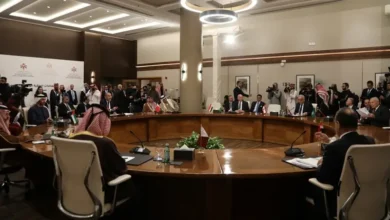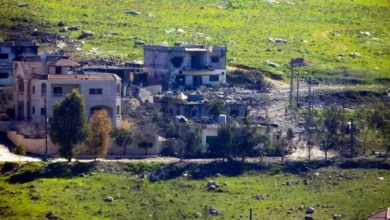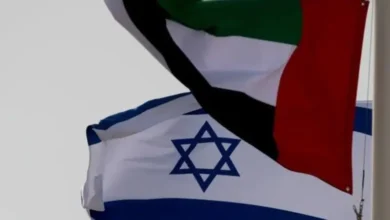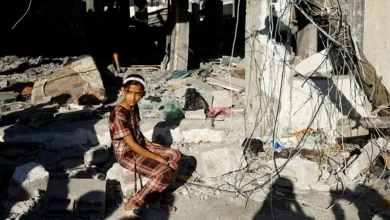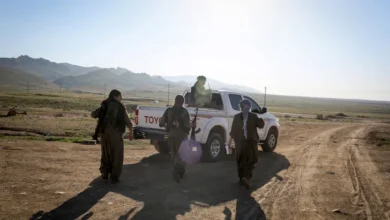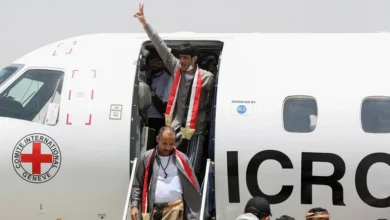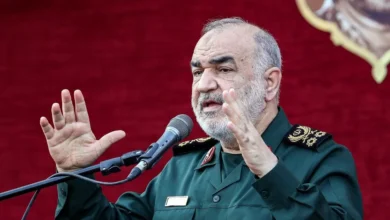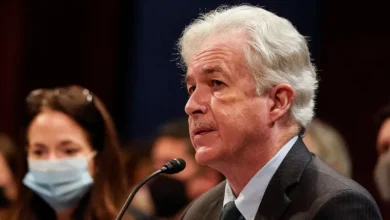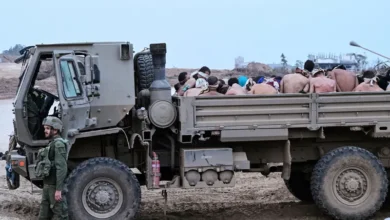Israeli forces fight Hamas in north Gaza as civilians’ plight worsens
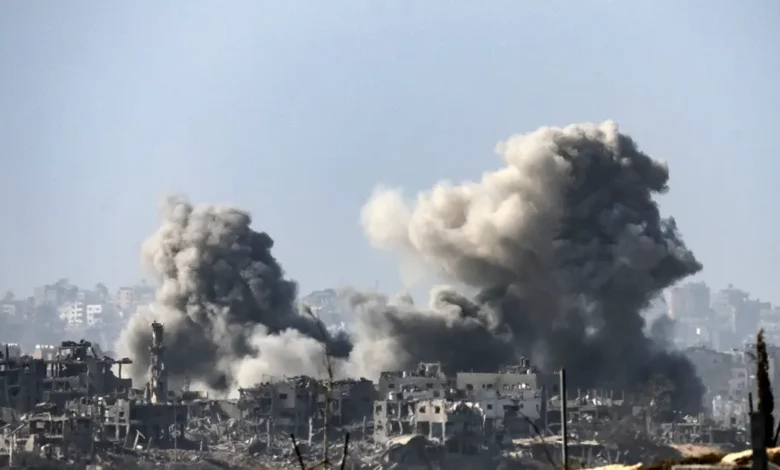
Israeli forces fought Hamas militants through shell-blasted buildings in the north of the Gaza Strip on Thursday as the plight of civilians in the besieged Palestinian territory worsened.
Gaza residents said Israeli troops were inching their way closer to the Al Shifa hospital, Gaza’s biggest health facility, where Israel believes Hamas has a command center.
Thousands of Palestinians have taken refuge there from the relentless Israeli bombardments.
The United Nations human rights chief called for a ceasefire and said both sides had committed war crimes in the month of fighting over the enclave.
In Paris, officials from about 80 countries and organizations were meeting to coordinate humanitarian aid to Gaza and find ways to help wounded civilians escape the siege.
Residents in Gaza City – a militant stronghold in the north of the Hamas-ruled territory – said Israeli tanks were stationed around the city. Both sides reported inflicting heavy casualties on one another in intense street battles.
Israel unleashed its assault on Gaza in response to a cross-border Hamas raid on southern Israel on October 7 in which gunmen killed 1,400 people, mostly civilians, and took about 240 hostages, according to Israeli tallies. It was the single worst day of bloodshed in Israel’s 75-year history.
Palestinian officials said 10,569 Gaza residents had been killed as of Wednesday, about 40 percent of them children, while a humanitarian crisis has gripped the enclave, with basic supplies running out and buildings demolished by unrelenting Israeli bombardments.
Israel, which has vowed to wipe out Hamas, says 33 of its soldiers have been killed in its ground operation as they advanced into the heart of Gaza City.
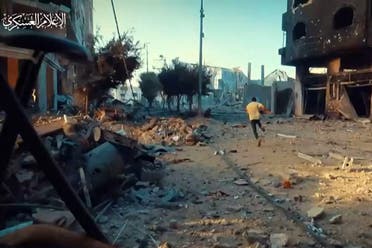
Israeli troops had secured a Hamas military stronghold called Compound 17 in Jabalya in northern Gaza after 10 hours of combat with Hamas and Islamic Jihad militants above and below the ground, the Israeli military said on Wednesday.
It said troops killed dozens of militants, seized weapons, exposed tunnel shafts and discovered a Hamas weapons manufacturing site in a residential building in the Sheikh Radwan neighborhood.
Israeli military footage showed soldiers walking through rubble into a building where one wall had been blasted away, finding weapons-manufacturing equipment, instruction manuals and a tunnel shaft with a cooling system. Nearby was a little girl’s bedroom with pink walls, pink wardrobes and three little beds.
The armed wing of Hamas said it had killed a greater number of Israeli soldiers than the military has announced, and destroyed dozens of tanks, bulldozers, and other vehicles. It released footage of fighters firing anti-tank rockets and scoring direct hits to vehicles.
Nowhere to run to
Thousands of Palestinians have sought refuge at Al Shifa hospital inside Gaza City despite Israel’s orders to evacuate the area it has encircled. They are sheltering in tents in the hospital grounds and say they have nowhere else to go.
The UN humanitarian office OCHA said the Israeli military had again told residents of the north to move southwards, opening a four-hour corridor for the fifth consecutive day. About 50,000 people left the area on Wednesday, it said.
Clashes and shelling around the main road continued, it said endangering evacuees. Corpses were lying alongside the road, while most evacuees were moving on foot as the Israeli military had told them to leave vehicles at the southern edge of Gaza city, it said.

Huge numbers of displaced people from among Gaza’s 2.3 million population are already crammed into schools, hospitals and other sites in the south.
Although the fighting is concentrated in the north, southern areas have also come under regular attack. In Khan Younis, Gaza’s main southern city, residents picked through the rubble and twisted debris of a building destroyed by an Israeli airstrike, hoping to find survivors, on Thursday morning, witnesses said.
“As deaths and injuries in Gaza continue to rise due to intensified hostilities, intense overcrowding and disrupted health, water, and sanitation systems pose an added danger: the rapid spread of infectious diseases,” the World Health Organization said.
War crimes
The UN High Commissioner for Human Rights, Volker Turk, on Wednesday called for an immediate ceasefire – which Israel and its main ally the United States have consistently rejected as benefiting Hamas.
“The atrocities perpetrated by Palestinian armed groups on 7 October were heinous, they were war crimes – as is the continued holding of hostages,” Turk said at the Rafah crossing in Egypt on the border with Gaza.
“The collective punishment by Israel of Palestinian civilians is also a war crime, as is unlawful forcible evacuation of civilians,” he said.
A conference in Paris on Thursday, attended by Arab nations, Western powers, G20 members and NGO groups such as Doctors Without Borders will discuss measures to alleviate the suffering in Gaza, but without a pause in fighting expectations are low.
Among the options discussed will be setting up a maritime corridor, potentially to use sea lanes to ship humanitarian aid into Gaza or evacuate the wounded.
US Secretary of State Antony Blinken, who has crossed the region on a diplomatic mission, on Wednesday outlined Washington’s expectations for Gaza when the conflict ends. He pushed back at Israeli comments that it would be responsible for security in Gaza indefinitely.
There should be “no reoccupation of Gaza after the conflict ends. No attempt to blockade or besiege Gaza. No reduction in the territory of Gaza,” Blinken said at a press conference in Tokyo.
Blinken said there may be a need for “some transition period” at the end of the conflict, but that post-crisis Gaza must “include Palestinian-led governance and Gaza unified with the West Bank under the Palestinian Authority.”
The Palestinian Authority (PA), which exercises limited self-rule in parts of the Israeli-occupied West Bank, says the Gaza Strip, where Hamas has ruled since 2007, is an integral part of what it envisions for a future Palestinian state.
Israeli officials have said they do not intend to occupy Gaza after the war, but have yet to articulate how they might ensure security. Israel withdrew its forces from Gaza in 2005.
